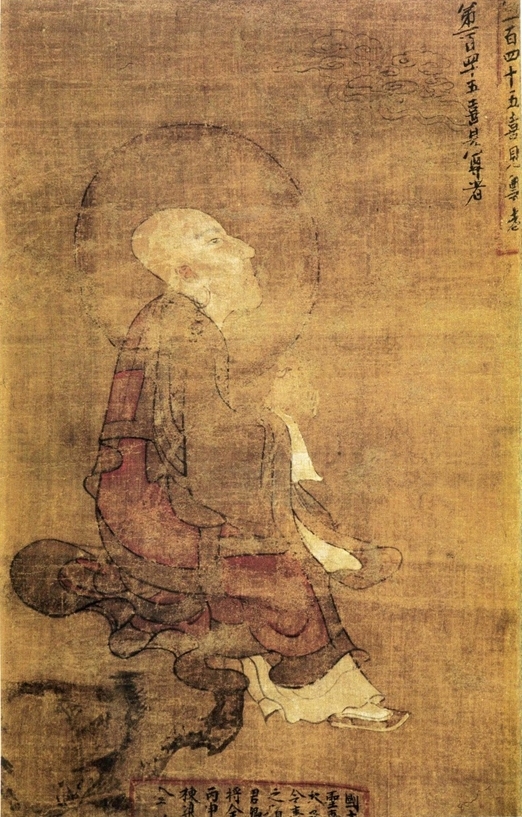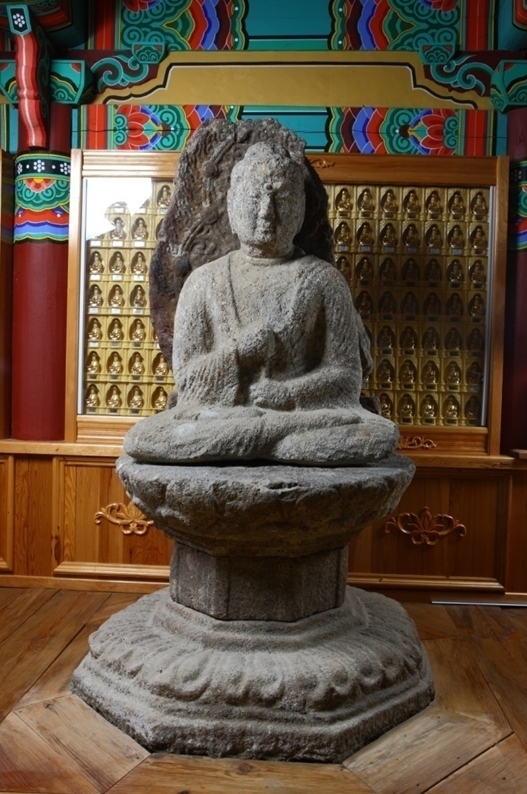Buddhist paintings from the Goryeo Dynasty and scriptures with outstanding historical and artistic values have been named National Treasures, the Cultural Heritage Administration said Thursday.
The state-run cultural heritage agency designated three rare Buddhist paintings and two Buddhist scriptures made during the heyday of Buddhism during the Goryeo Dynasty (918-1392) as National Treasures.
The state-run cultural heritage agency designated three rare Buddhist paintings and two Buddhist scriptures made during the heyday of Buddhism during the Goryeo Dynasty (918-1392) as National Treasures.

It also elevated the status of a Buddhist statue from the Silla Kingdom to the highest rank in the National Treasure category, recognizing its highly sophisticated proportion and shape.
Of the newly designated artifacts, a Buddhist painting, presumed to have been created in the 13th century, is one of the two last remaining paintings depicting the 16 disciples of Buddha in Korea.
Another painting, portraying an old monk receiving alms, features a realistic depiction of the monk rendered with sophisticated brush strokes and dynamic use of colors that highlight the elegance of Goryeo Buddhist art.
Buddhism flourished during the time of the Goryeo Dynasty, which adopted Buddhism as the official state religion. It saw Buddhist orders diversified and productions of a variety of Buddhist art.
The Silla Buddhist statue, located in Naewon Temple in South Gyeongsang Province, was recognized for its potential as an example in the study of ancient Buddhist sculptures.

“The form of Buddha holding the left forefinger in the right hand placed in front of his chest was believed to have arrived in the Korean Peninsula in the mid-ninth century, but this sculpture shows that the style was already in use in the mid-eighth century,” CHA researchers said in a press release.
The mid-eighth century statue represents a shift in the style of Buddha statues and Buddhism brought on through active trade and cultural exchanges between the Silla Kingdom (B.C. 57–A.D. 935) and China’s Tang Dynasty.
By Lee Woo-young (wylee@heraldcorp.com)



![[Exclusive] Korean military set to ban iPhones over 'security' concerns](http://res.heraldm.com/phpwas/restmb_idxmake.php?idx=644&simg=/content/image/2024/04/23/20240423050599_0.jpg&u=20240423183955)

![[Graphic News] 77% of young Koreans still financially dependent](http://res.heraldm.com/phpwas/restmb_idxmake.php?idx=644&simg=/content/image/2024/04/22/20240422050762_0.gif&u=)



![[Pressure points] Leggings in public: Fashion statement or social faux pas?](http://res.heraldm.com/phpwas/restmb_idxmake.php?idx=644&simg=/content/image/2024/04/23/20240423050669_0.jpg&u=)









